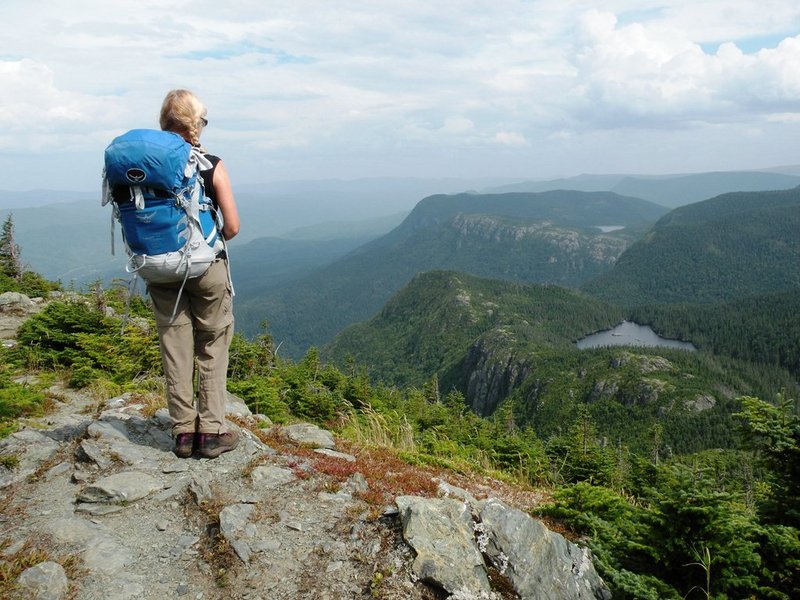One of my big hikes beyond the borders of Maine last year was a brilliant late summer trip to Gaspésie National Park on the Gaspé Peninsula in Quebec, far enough away to qualify as exotic yet within reasonable striking distance by car.
Gaspésie is a vast expanse of high summits, alpine tundra, dramatic escarpments, deep valleys, old growth forests and pristine lakes and rivers that stretches for more than 70 miles from west to east just inland from the St. Lawrence River. It is also home to a remnant herd of woodland caribou, as well as moose, deer, black bear and 150 bird species.
The park is bisected by the Saint Anne River. To the west, the Chic Choc Mountains extend in an east-west direction, while to the east, the McGerrigle Mountains range from north to south and include Mont Jacques-Cartier; at 4,167 feet it is the second highest peak in Quebec. Twenty-five summits exceed 3,000 feet.
The International Appalachian Trail traverses the length of the park as part of its long route from Baxter State Park to the northern tip of Newfoundland. This “Grand Traverse,” as it is known, was our goal, and we would saunter along for eight glorious days carrying relatively light packs and staying in simple but comfy backcountry huts.
In the heart of the park on Route 299 is located the Discovery and Visitor Center, where exhibits highlight the fascinating natural and human history of the Gaspé wilderness. A small store sells park maps and guidebooks, camping supplies and some groceries. At the information desk rangers dispense park passes and camping and shuttle bus reservations. Hungry hikers will appreciate the bistro, which makes a delicious burger platter and pours cold beer in large frosty mugs.
Two nearby drive-in campgrounds feature the usual site amenities plus hot showers and laundry. They make a good overnight base before and after the big backpack trip, and as you will note below, partway through also. For a little more luxury, the Gite du Mont Albert has nicely appointed hotel rooms and cabins. Enjoy fine dining in the bar and restaurant, which also serves a fabulous breakfast buffet well worth the price.
The park makes it easy to get to either end of the hike with a terrific shuttle service. From the visitor center, it’s a four-hour journey over increasingly rough roads to the start at La Chouette, where the first refuge is perched on a scenic hillside. En route, the van stops at two refuges on the planned itinerary where you can drop off a food supply box (critter-proofed, of course!). Doing so means never having to carry A more than two days’ food.
The refuges are spaced a good day’s walk apart. Each well-maintained outpost has bunk space for eight, table and chairs, woodstove, water source and privy. You need only carry a sleeping bag; no tent or mattress necessary.
The first six days of the park traverse along the International Appalachian Trail (IAT) connects Mont Logan to Mont Albert and then Route 299. Both peaks feature extensive alpine terrain and the good possibility of spotting caribou. In between are miles of excellent ridge walking with great views and good swimming.
Back again at the visitor center, spend the night before boarding a bus to the east end of the park.
Follow rangers to the alpine summit of Mont Jacques-Cartier and grand panoramic vistas from the enclosed observation tower. It’s only a matter of time before caribou will wander across your path up here. Then it’s on to the refuge at Le Tetras before finishing this magnificent hike over Mont Xalibu and past Lac aux Americains.
Other shorter backpack and day hike options abound. The maritime influence of the St. Lawrence River combined with the mountainous elevations produce frequent cold and wet weather, so prepare accordingly. For more information on planning your own Gaspé hiking adventure, go to www.sepaq.com/pq/gas or call 418-763-7494.
Carey Kish of Bowdoin is editor of the AMC Maine Mountain Guide. For more tips on hiking the Gaspé, contact him at:
MaineOutdoors@aol.com
Send questions/comments to the editors.


